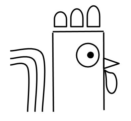Now that you have a sense of your style and needs, it is finally time to select and shop for that homeschool curriculum! Home education can be as low cost as the late fees accumulated at the library. While it can be tempting to buy all of the things, erring on the side of simplicity is always better. So be intentional and selective when making your selections and purchases. Besides, there are a ton of quality, free resources out there to check out first!
Transitioning from a public or private school
If your student is already used to a more formal school setting, it can be tempting to replicate that environment or manage expectations of what education at home should look like. This adjustment period is called deschooling and it can take some time to decompress and transition into a new way of doing things. Here is a great post on deschooling from someone with more experience.
As for curriculum, all-in-one curriculum may help smooth the transition if you don’t already have a sense of what direction to head in yet. There are free online curriculum options like Easy Peasy All In One Homeschool or Amblesideonline if you need daily specifics to get you going. Boxed curriculum like My Father’s World or Five in a Row, are easy introductions to homeschooling. Finding a homeschool co-op is also a great way to meet other homeschoolers, stay accountable, and find support.

Every Homeschoolers Secret Weapon to Research Curriculum
Cathy Duffy Reviews
Once you have a solid sense of how your student learns, or at least a bit about their personality and learning style, plus your own preferences for curriculum, Cathy Duffy’s top 102 Top Picks for Homeschool can help narrow the search even further. Her reviews are thorough and helpful!

you have to read a lot of books.”
– Roald Dahl
Reading Curriculum
Building lifelong learners go hand in hand with building lifelong readers. Keep in mind there are many different ways to “read”; audiobooks, magazine articles, and even graphic novels can all be part of the reading culture of your home.
Reading lists, living books, classics, and award-winning books such as Newbery and Caldecott, are all great places to start when looking for quality books to read and build your library.
Checkout used books stores, thrift stores, the library, Little Free Library for inexpensive ways to build your home library. Subscriptions to quality magazines are also a great way to get your kids reading!
When build a culture of lifelong learning in the home, it is important to make a variety of age appropriate books readily available (library, or purchased), read regularly together, and lead by example by taking time to read yourself.
For formal reading instruction/Phonics
**Make sure your student is ready.**
All About Learning’s site has a readiness evaluation to help you know when to start with formal reading lessons as well as other activities to help get them ready to read and beyond.
Curriculum
Learn to Read in 100 Easy Lessons
All About Reading (This is what we have used and loved here at the Coop)
Online Options
Starfall (Also a favorite at the Coop)
Cathy Duffy’s Reviews and Recommendations
Writing Curriculum
Start with large motor skills (chalk, white board, salt box, sandpaper). Teach them the letter sounds (apps by All about Reading or Starfall are great for this). If you want something more of a workbook style, Developing the Early Learner Series is fantastic!

Also consider teaching Cursive First. It’s not for everyone, but there are a lot of great reasons to consider it. The approach is gentle and incorporates phonics sounds and large motor skills to start.
Math Curriculum
Count, take some away or add more and count again. Count to 10 then to 20 etc, count by 5s and 10s.
Cathy Duffy Reviews for Math Curriculum
Here at the Coop we have loved;
- Math U See which is mastery method and is heavily visual using block manipulatives and videos for the parent or child to watch before at home instruction.
- Saxon is a spiral method approach, meaning smaller concepts are introduced gradually and revisited repeatedly and build upon throughout the course.
Beyond the 3Rs
Unit Studies, lapbooks, and notebooking are all great ways to integrate multiple subjects and skills at once for older students.
For younger students, especially just starting out, there is no reason to overly structure other subjects that you may want to explore.
Take walks, talk, observe, listen, discuss time, days of the week, and months of the year, seasons, weather, and temperature.
Be intentional but keep it informal. Integrate learning into your everyday activities, and don’t feel like you need to confine it to one room or place. It is always happening whether you notice it or not.
Also checkout: 4 Steps to Avoid Buying the Wrong Homeschool Curriculum


